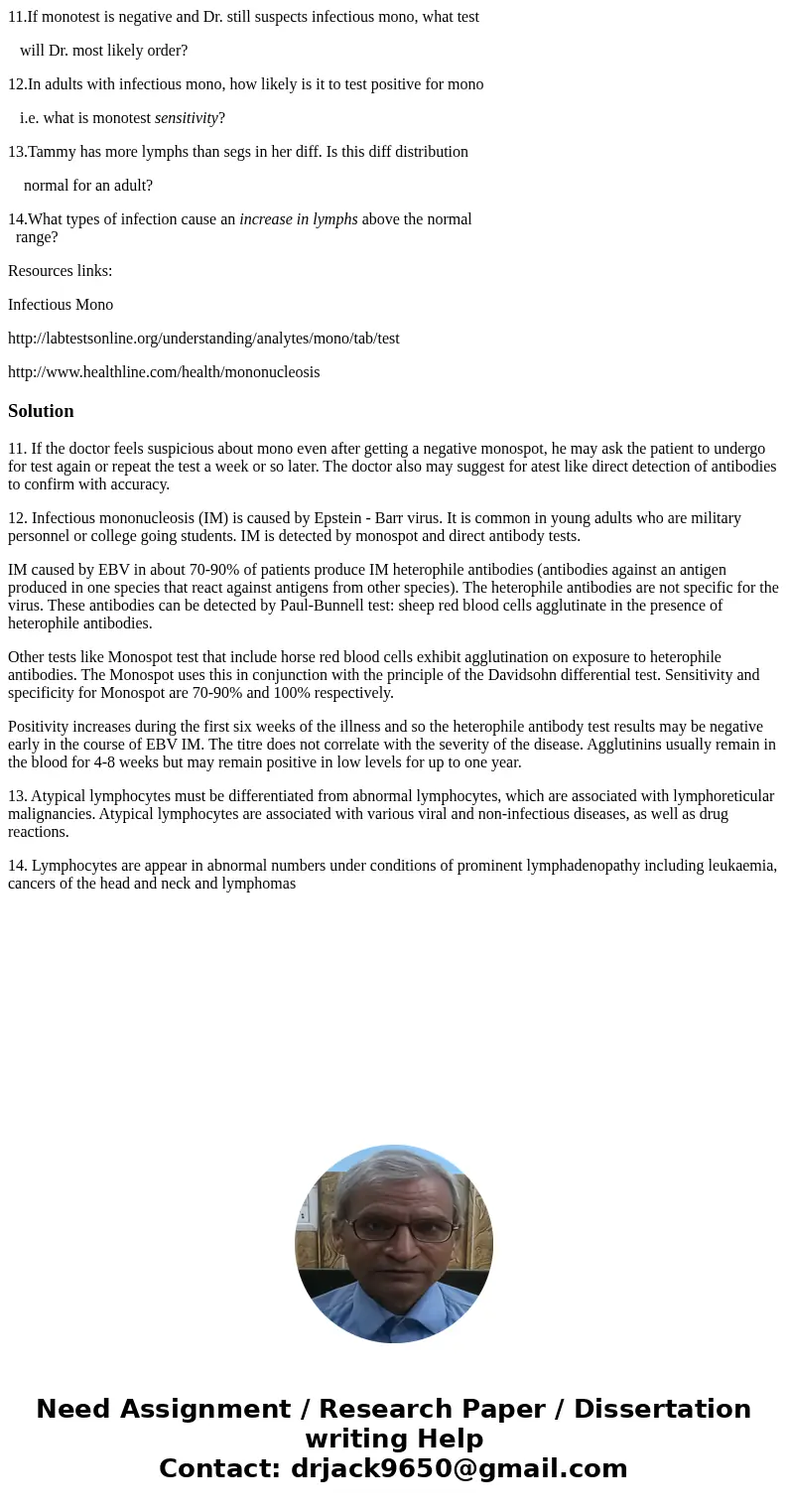11If monotest is negative and Dr still suspects infectious m
11.If monotest is negative and Dr. still suspects infectious mono, what test
will Dr. most likely order?
12.In adults with infectious mono, how likely is it to test positive for mono
i.e. what is monotest sensitivity?
13.Tammy has more lymphs than segs in her diff. Is this diff distribution
normal for an adult?
14.What types of infection cause an increase in lymphs above the normal
range?
Resources links:
Infectious Mono
http://labtestsonline.org/understanding/analytes/mono/tab/test
http://www.healthline.com/health/mononucleosis
Solution
11. If the doctor feels suspicious about mono even after getting a negative monospot, he may ask the patient to undergo for test again or repeat the test a week or so later. The doctor also may suggest for atest like direct detection of antibodies to confirm with accuracy.
12. Infectious mononucleosis (IM) is caused by Epstein - Barr virus. It is common in young adults who are military personnel or college going students. IM is detected by monospot and direct antibody tests.
IM caused by EBV in about 70-90% of patients produce IM heterophile antibodies (antibodies against an antigen produced in one species that react against antigens from other species). The heterophile antibodies are not specific for the virus. These antibodies can be detected by Paul-Bunnell test: sheep red blood cells agglutinate in the presence of heterophile antibodies.
Other tests like Monospot test that include horse red blood cells exhibit agglutination on exposure to heterophile antibodies. The Monospot uses this in conjunction with the principle of the Davidsohn differential test. Sensitivity and specificity for Monospot are 70-90% and 100% respectively.
Positivity increases during the first six weeks of the illness and so the heterophile antibody test results may be negative early in the course of EBV IM. The titre does not correlate with the severity of the disease. Agglutinins usually remain in the blood for 4-8 weeks but may remain positive in low levels for up to one year.
13. Atypical lymphocytes must be differentiated from abnormal lymphocytes, which are associated with lymphoreticular malignancies. Atypical lymphocytes are associated with various viral and non-infectious diseases, as well as drug reactions.
14. Lymphocytes are appear in abnormal numbers under conditions of prominent lymphadenopathy including leukaemia, cancers of the head and neck and lymphomas

 Homework Sourse
Homework Sourse